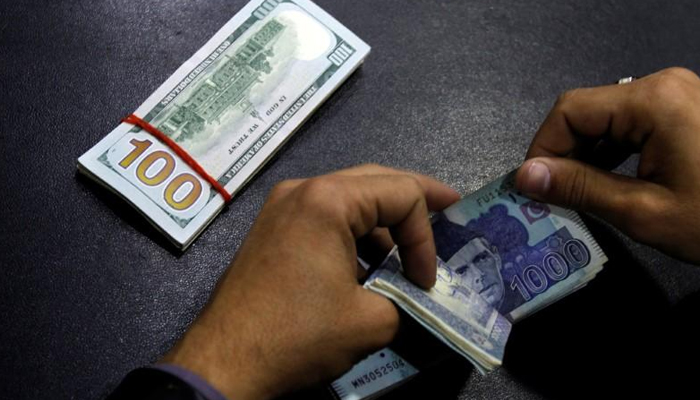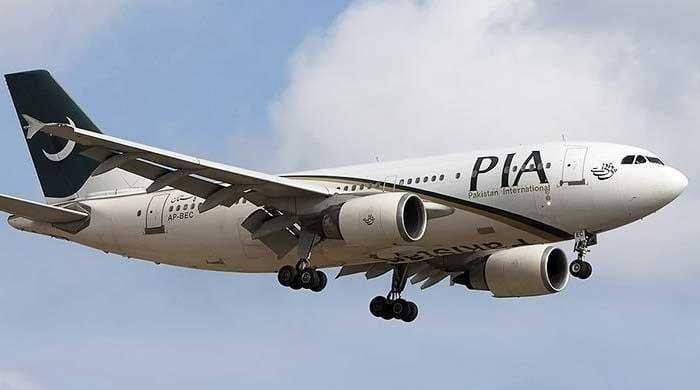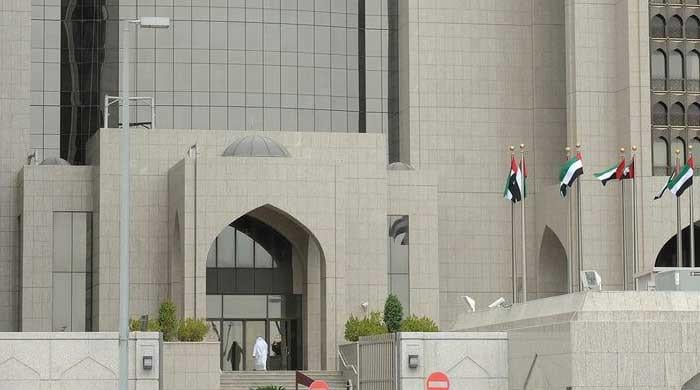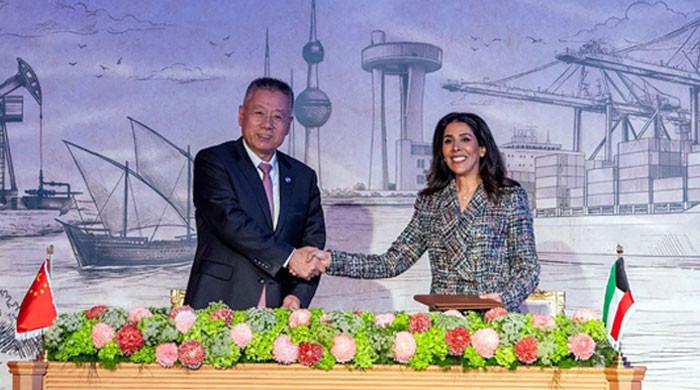Economic headwinds push rupee past 210 against dollar
Rupee slumps to 210.10 against dollar in interbank market; analysts say IMF programme revival to bring stability
July 13, 2022

- Rupee slumps to 210 against dollar in interbank market.
- Analysts say IMF programme revival to bring stability.
- Expert says remittances have dried up post-Eid ul Adha.
KARACHI: As uncertainty over the revival of the International Monetary Fund (IMF) programme continues, the Pakistani rupee slumped once again past 210 against the US dollar on Wednesday in the interbank market.
Data from the State Bank of Pakistan (SBP) showed that the rupee closed at 210.10 against the dollar, down 1.04% from 207.91 — the previous close.
The decline came after the government decided to reduce the price of petroleum products, leading to uncertainty in the market over the revival of the international monetary lender’s programme.
Since the beginning of the last fiscal year (July 1, 2021), the rupee has dropped by a massive 33.36% (or Rs52.56) compared to the previous fiscal year’s close at Rs157.54.
Pakistan-Kuwait Investment Company Head of Research Samiullah Tariq told Geo.tv that two factors are driving the market — the strengthening of the dollar and impending payments.
“The first is the strength of the dollar against other currencies as demonstrated by DXY [...] the second is impending payments, as due to Eid holidays, factories were closed,” he said.
Tariq further said that the remittance inflow was strong before Eid ul Adha as overseas Pakistanis send money to their families ahead of the festive season.
But post-Eid, Tariq said, the remittances have dried up.
In the view of Alpha Beta Core CEO Khurram Schehzad, a 1% or 2% daily volatility was not unusual, but he noted that the finalisaion of the IMF programme will help stabilise the currency market.
He noted that it was a “good thing” that the oil rates were declining in the international market, which will eventually help reduce demand for dollars in the local market for imports.









